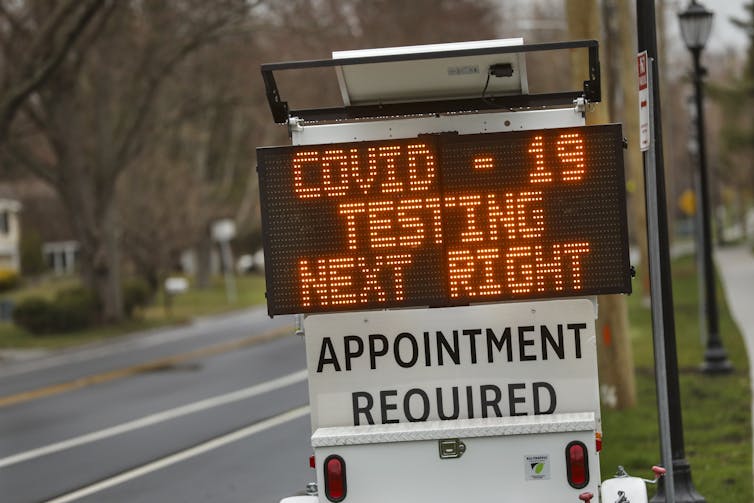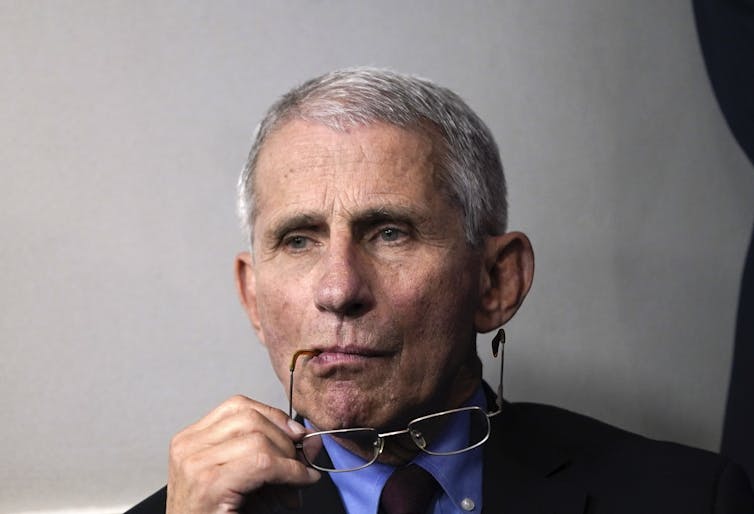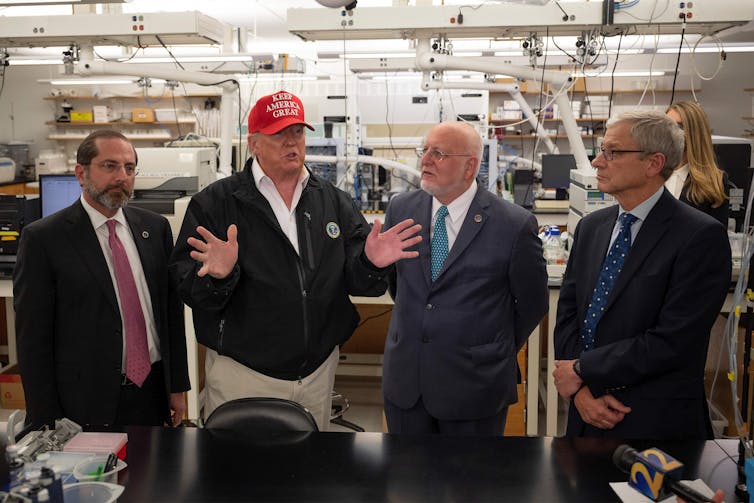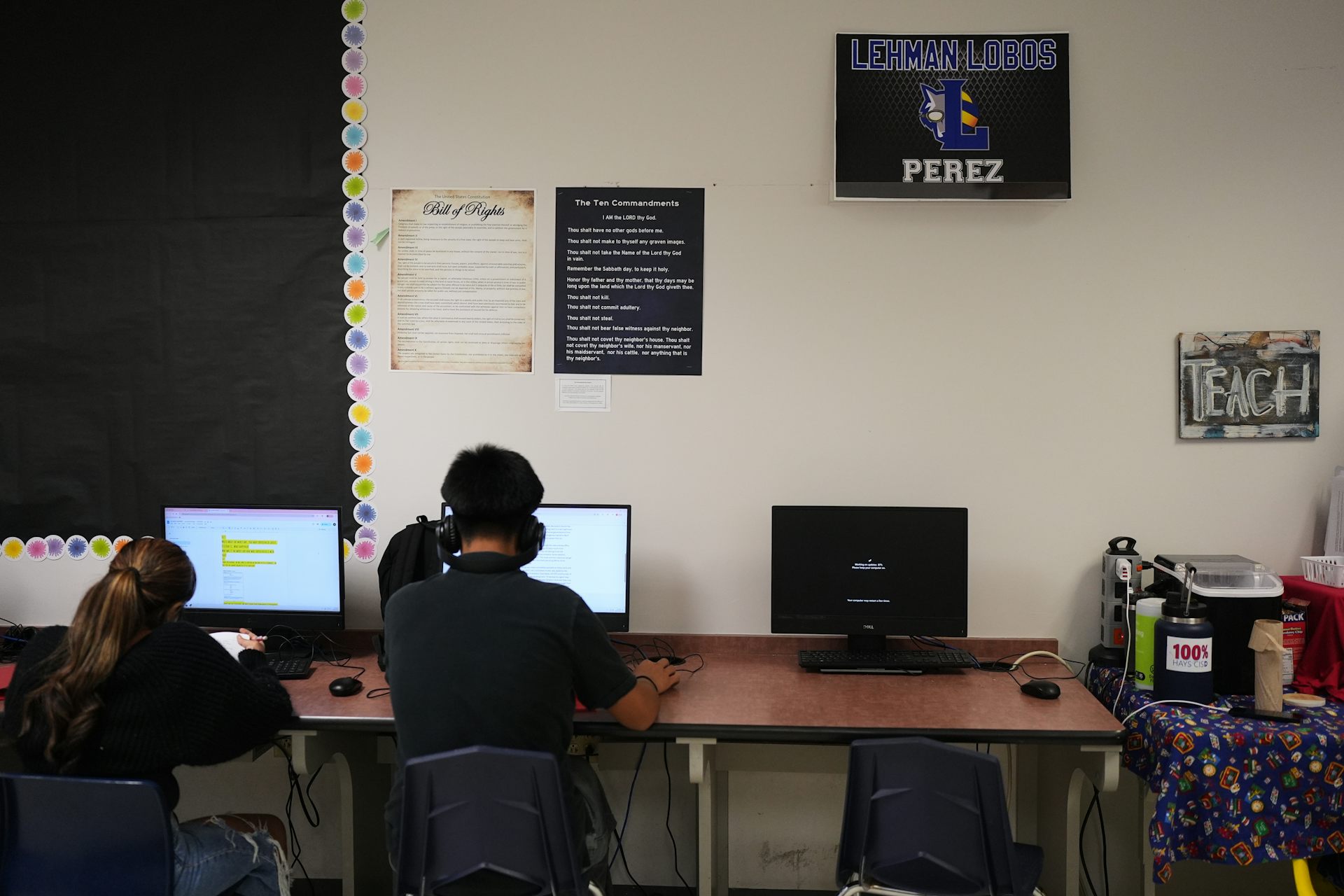I'm a public health researcher, and I'm dismayed that the CDC's missteps are causing people to lose
The CDC has long been a trusted source of health information, keeping the public not only safe but calm in times of disease outbreaks. Public health officials fear now for its reputation.

The Centers for Disease Control and Prevention has been the premier U.S. public health agency since its founding on July 1, 1946.
The CDC is responsible for assuring the health of all Americans and promoting evidence-based public health practice. It also is responsible for researching the causes of death and illness as well as working on ways to prevent them. Americans have come to trust it for accurate information.
However, recent actions by the CDC have led many in public health to call into question the integrity of the CDC’s leadership as they ignore the science and bow to political pressure. Their actions have hurt public health efforts and led to confusion and mistrust by the public at large.
As an infectious disease epidemiologist, I have spent my career both in academia and in public health practice studying how viruses infect people and testing populations to determine current infection and immunity. I find the politicization of advice coming out of the CDC disturbing, to say the least.
The latest, most egregious non-science-based advice is a change in recommendation for who should get tested for COVID-19. Here’s what happened and why it matters so much – not just to public health experts, but to the public.

Testing is key to containing the virus
Public health experts have learned a great deal about the novel coronavirus and COVID-19 since the coronavirus first appeared.
They have learned, for example, that an estimated 4 out of 10 infected people will never show symptoms – but can unknowingly infect others.
In addition, infected persons who will go on to develop symptoms can spread the disease one to two days before those symptoms occur. These are two of the reasons the virus is so hard to contain.
Evidence suggests that widespread testing of people without symptoms would greatly reduce the spread of the virus by allowing people to know they’re infected and self-quarantine. Contacts of those asymptomatic cases can be identified and tested for the same reasons. This has been the CDC’s recommendation since studies first began to show asymptomatic transmission.
Then, the CDC on Aug. 24, 2020 changed course and recommended to test only those people who have symptoms for COVID-19.
Many public health experts were shocked. Testing only those who have symptoms will miss close to half of those who are infected.
Two days after the revised guidelines had been quietly changed on the CDC website, Director Robert Redfield clarified that those who come into contact with confirmed or probable COVID-19 patients could be tested even in the absence of symptoms.
That has always been the case, though.
In the meantime, the altered guidelines on the CDC website promote confusion and remain unchanged as of Aug. 31, 2020. Arizona, California, Connecticut, Florida, Illinois, Texas, New Jersey and New York have already announced they will not follow the new CDC testing guidelines, showing more understanding of the benefits of testing than our national public health institution.

Fauci had no voice in the matter
This new recommendation came from the White House Coronavirus Task Force, and the CDC fell in line. Dr. Anthony Fauci, a task force member and head of the National Institute of Allergy and Infectious Diseases, was undergoing surgery on his vocal cords when the task force met Aug. 20 and decided on the change.
The American Public Health Association has pointed out that the change was made without effective consultation with public health professionals working on the ground to control the pandemic. The World Health Organization continues to support testing of asymptomatic persons. Nearly every public health organization has called for a reversal.
It is a particularly confusing decision given that lack of access to adequate testing has been an ongoing issue and has led to serious barriers in getting control of the pandemic.

See no virus, have no virus?
Without test data, epidemiologists are flying blind. Not knowing who is infected, we do not have a picture of how many infected persons are in the community and how the virus is being transmitted.
Identifying those who may have been exposed to the virus is the whole rationale for contact tracing – find cases, identify contacts who may have been infected, ask them to self-quarantine, and test them for the virus. Testing is at the core of controlling infectious disease spread.
The thinking seems to be that if you don’t test, the number of cases will go down.
Clearly, this is true only in the political sense. Yes, the number of reported cases will decrease, but the number of infected persons will not. By not identifying those who are infected but don’t have symptoms, spread of the virus will increase as those who don’t know they are infected, infect others.
Trump has said that he “likes the numbers where they are” and said at a campaign rally in Tulsa that he would tell his people to “slow the testing down.”
[Deep knowledge, daily. Sign up for The Conversation’s newsletter.]
A series of tussles
The CDC has been in the midst of a political struggle many times during this pandemic.
In May, it was revealed that CDC had been adding antibody tests, a marker of previous infection, to the number of PCR tests, a marker of current infection, performed. This made it appear that more tests to detect current infection had been performed than actually had.
In July, hospitalization data, historically reported to CDC and used by health departments and researchers throughout the country to understand the pandemic, disappeared from the CDC website as reporting switched to a private contractor. It reappeared a few days later, but this raised concerns this would hurt the ability of CDC to gather and analyze these data.
In another instance, the administration pressured CDC to rewrite its guidelines for safely reopening schools. It did this, even though once again, the guidelines did not reflect current scientific knowledge.
The world is now in the midst of the worst pandemic in over a century. The United States has 4.4% of the world’s population but 24% of COVID-19 cases. Plainly, we are not doing well, and lack of trust in CDC’s guidance as well as contantly changing messaging is hampering our efforts to control the virus. No wonder the public is confused about what they should be doing.
It does not bode well if we Americans can no longer trust the advice and guidelines emanating from our national public health entity, not just for control efforts in this pandemic but for future health concerns as well.
I answer questions about COVID-19 weekly on a radio call in show. A few weeks ago a caller asked me if we could trust the information coming out of the CDC. I never thought I would be in a position where I couldn’t give an unequivocal “yes.” When politics overcomes science, public health cannot fulfill its mission, and everyone will all suffer.
Catherine Lynne Troisi is an executive board member of the American Public Health Association.
Read These Next
Vaccine committee votes to scrap universal hepatitis B shots for newborns despite outcry from childr
The decision undoes a highly effective 34-year prevention strategy that has nearly eliminated early…
3 states are challenging precedent against posting the Ten Commandments in public schools – cases th
New laws mandating the Ten Commandments’ display in schools have faced lawsuits in Texas, Louisiana…
Far-right extremists have been organizing online since before the internet – and AI is their next fr
Neo-Nazis and other far-right extremists were early adopters of bulletin board systems, pioneering online…





